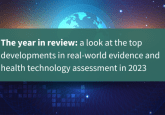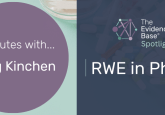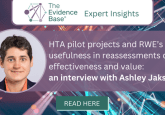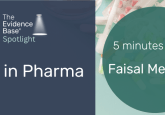RWE and HTA – a snapshot of recent developments with Sreeram Ramagopalan: June–July 2022

Read highlights from the latest instalment of Sreeram Ramagopalan’s (F. Hoffman La Roche, Basel, Switzerland) industry news round-up, which discusses some of the latest developments regarding real-world evidence (RWE) in the context of health technology assessment (HTA) and is published bi-monthly in our partner journal, the Journal of Comparative Effectiveness Research.
Read the full update for June–July 2022 in the Journal of Comparative Effectiveness Research here >>>
What happened over these months that you were expecting?
The publication of the ISPOR Task Force report on machine learning methods in health economics and outcomes research. The report highlights multiple approaches that may specifically help with minimizing confounding in real-world data (RWD) studies, including cohort selection, confounder identification and adjustment, and estimating treatment effect heterogeneity. Cohort selection is highlighted in the report as an area where machine methods offer particular promise. RWD sources, particularly electronic health records, often derive variables from unstructured data, such as free-text clinician notes within patient records. Manual abstraction has traditionally been utilized to extract information from such sources, which is costly and time-consuming. The report highlights how machine learning methods, such as natural language processing, can increase the efficiency of cohort selection.
What happened that surprised you over these months?
Ekin-Su and Davide? Heatwaves? England women’s football team winning Euro 2022… a lot of surprises but one item of interest is how RWE is being considered as a tool to potentially prosecute patients and physicians undertaking abortions in the US after recent changes in legislation.
If we only read about one story related to real-world data and healthcare innovation, what should it be?
I really enjoyed the article in Nature by the team from Meta. It really shows the power of more novel data sources, such as social media. The researchers investigated the friendships of 72 million US Facebook users and showed that if children from a lower socioeconomic status had more friendships with children in a higher socioeconomic status, they were more likely to earn more as an adult.
What do you think the larger implications of some of the developments discussed in your latest column piece may be for the field?
With regards to machine learning, more studies investigating the usefulness of these methods in a HTA setting, and in what cases these methods are superior to existing approaches, will be required to generate the confidence needed to enable wider adoption. Many HTA agencies are yet to provide concrete guidance on when they are willing to accept RWD for guiding their decisions. Reducing or addressing key biases is crucial for improving the acceptance of comparative effectiveness studies utilizing RWD but will require the application of increasingly complex analytics, potentially including the utilizing of methods such as machine learning. It is therefore imperative that HTA agencies maintain awareness of methods development in the area and update guidelines accordingly.
Disclaimers:
Sreeram Ramagopalan is an employee of F. Hoffmann-La Roche.
The opinions expressed in this feature are those of the interviewee/author and do not necessarily reflect the views of The Evidence Base® or Future Science Group.






